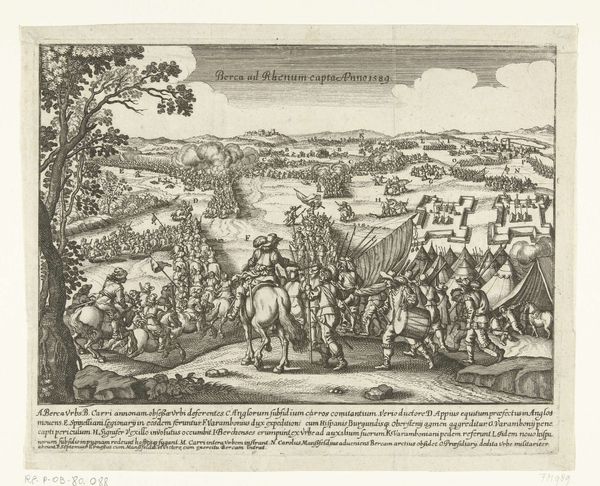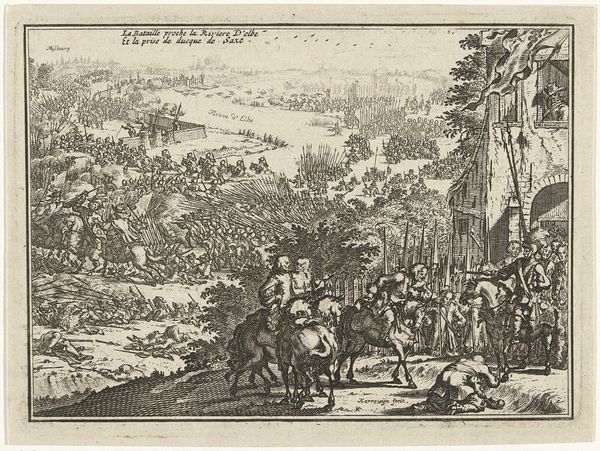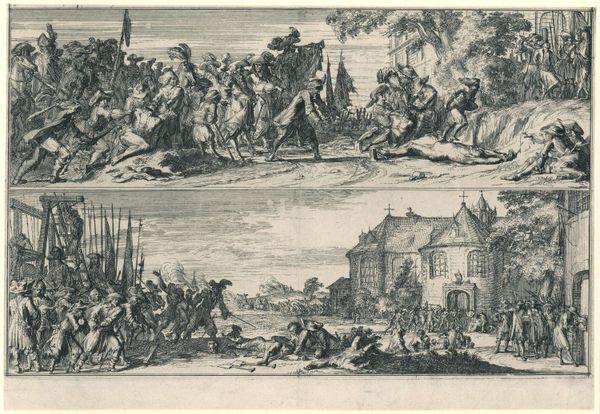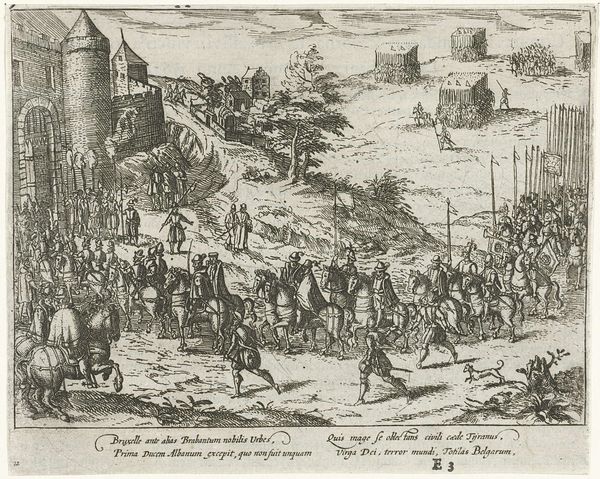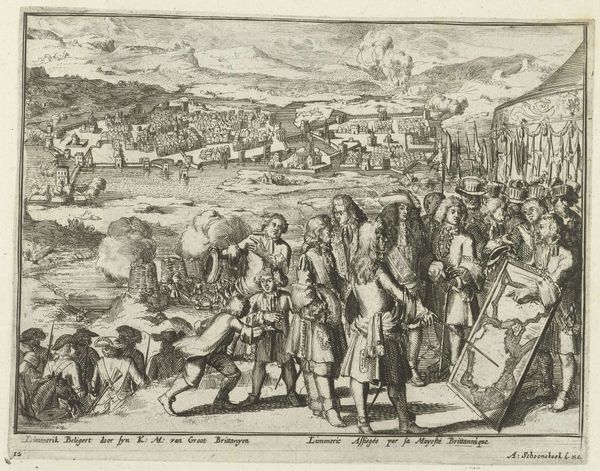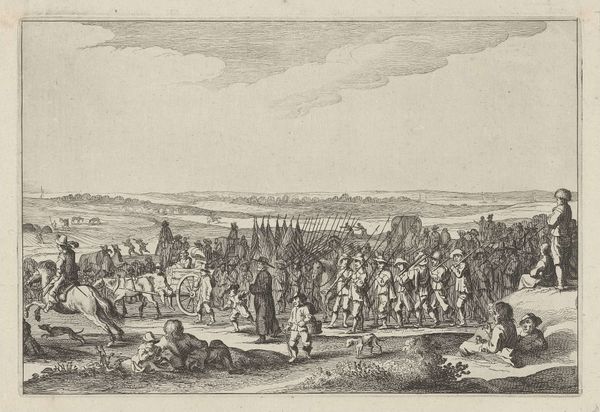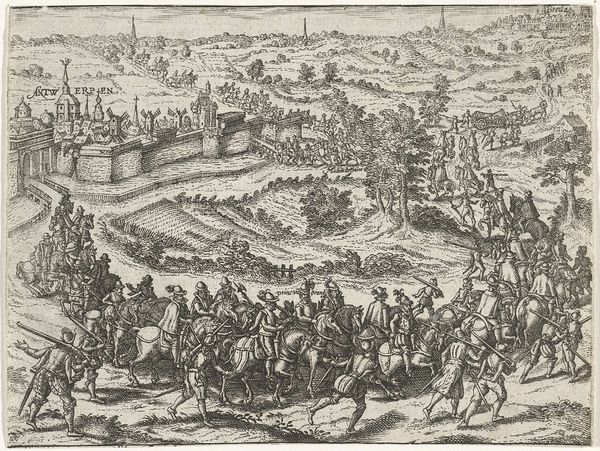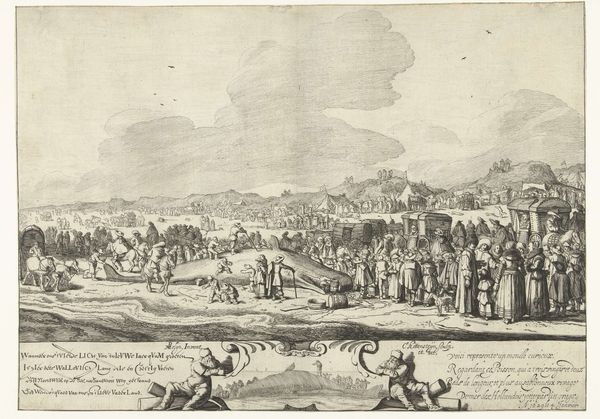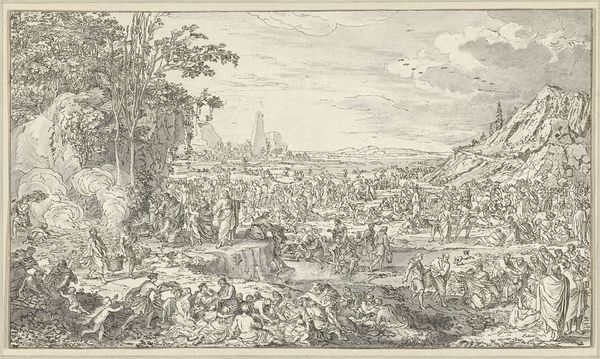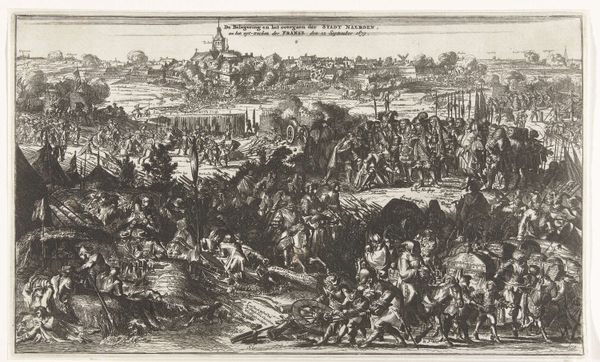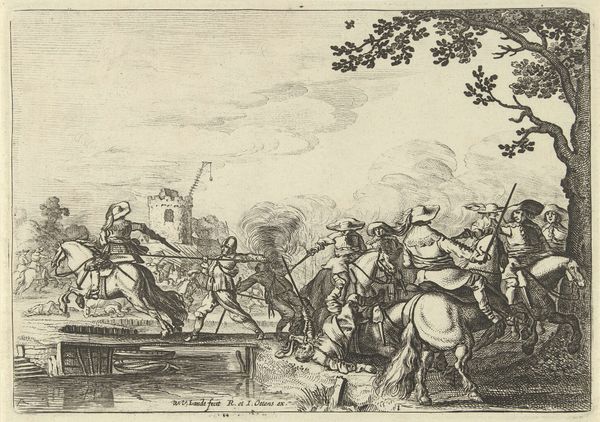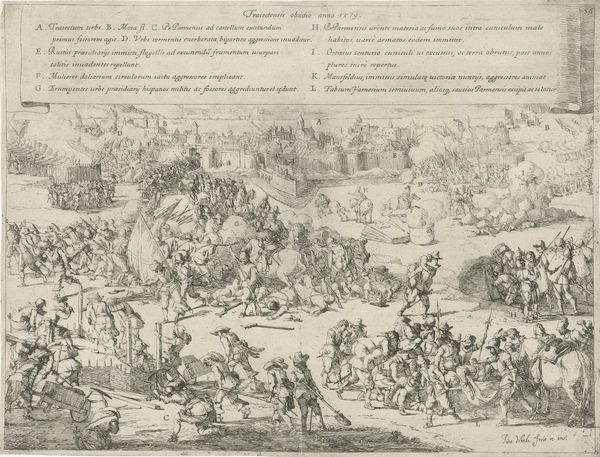
print, etching, engraving
#
narrative-art
#
baroque
# print
#
etching
#
landscape
#
figuration
#
genre-painting
#
history-painting
#
engraving
#
realism
Dimensions: height 203 mm, width 275 mm
Copyright: Rijks Museum: Open Domain
Curator: This print, rendered with delicate lines in engraving and etching, is titled "Soldaten overvallen en plunderen een dorp," depicting soldiers attacking and plundering a village. It's attributed to Jan van Ossenbeeck, dating sometime between 1647 and 1674. The work presents a panorama of brutality amidst a landscape. What's your first take on it? Editor: The chaos immediately strikes me. The scene is filled with movement and violence, but it's unsettlingly distant. Like we’re witnessing this devastation from a safe vantage point, perhaps reflecting the viewer's own relationship to power and violence. Curator: Indeed. Ossenbeeck's print belongs to a larger visual culture that, especially after the Peace of Münster in 1648, reflected on the social impact of seemingly endless wars. Artists started depicting the effects of conflict on ordinary citizens, providing a grim perspective. Editor: Exactly. It challenges the glorification of military conquest. By showing the pillaging and violence against civilians, Ossenbeeck critiques the brutal realities often glossed over in history paintings or heroic portrayals of war. The composition, chaotic yet carefully constructed, reinforces that contrast. Curator: Absolutely, the scattered bodies and panicked villagers present a stark reality contrasting any glorified version of battle. The architecture—the church and humble dwellings—also serve as a backdrop to the unravelling of order. They illustrate a world turned upside down by violence. Editor: And who is given focus? Is it the soldiers dominating the foreground with an uncaring gaze? Or the faceless people fleeing in disarray, losing all they have. These elements contribute to the overarching narrative of trauma and resilience. The print seems interested in probing the psychological impacts on victims and their communities. Curator: This touches on why the visual representation of warfare changed. The depiction of everyday lives upended becomes central, which prompts broader socio-political awareness among viewers removed from the actual fighting. Editor: I'm left contemplating what responsibility this kind of imagery puts on us, as viewers then and now. Does merely looking confront us to complicity, or does it incite action? Curator: Food for thought. It leaves one to consider art's enduring capacity to make present even the most historically remote horrors. Editor: Indeed. This engraving pushes us to consider who writes history and who is erased by it. Thank you for illuminating it.
Comments
No comments
Be the first to comment and join the conversation on the ultimate creative platform.
